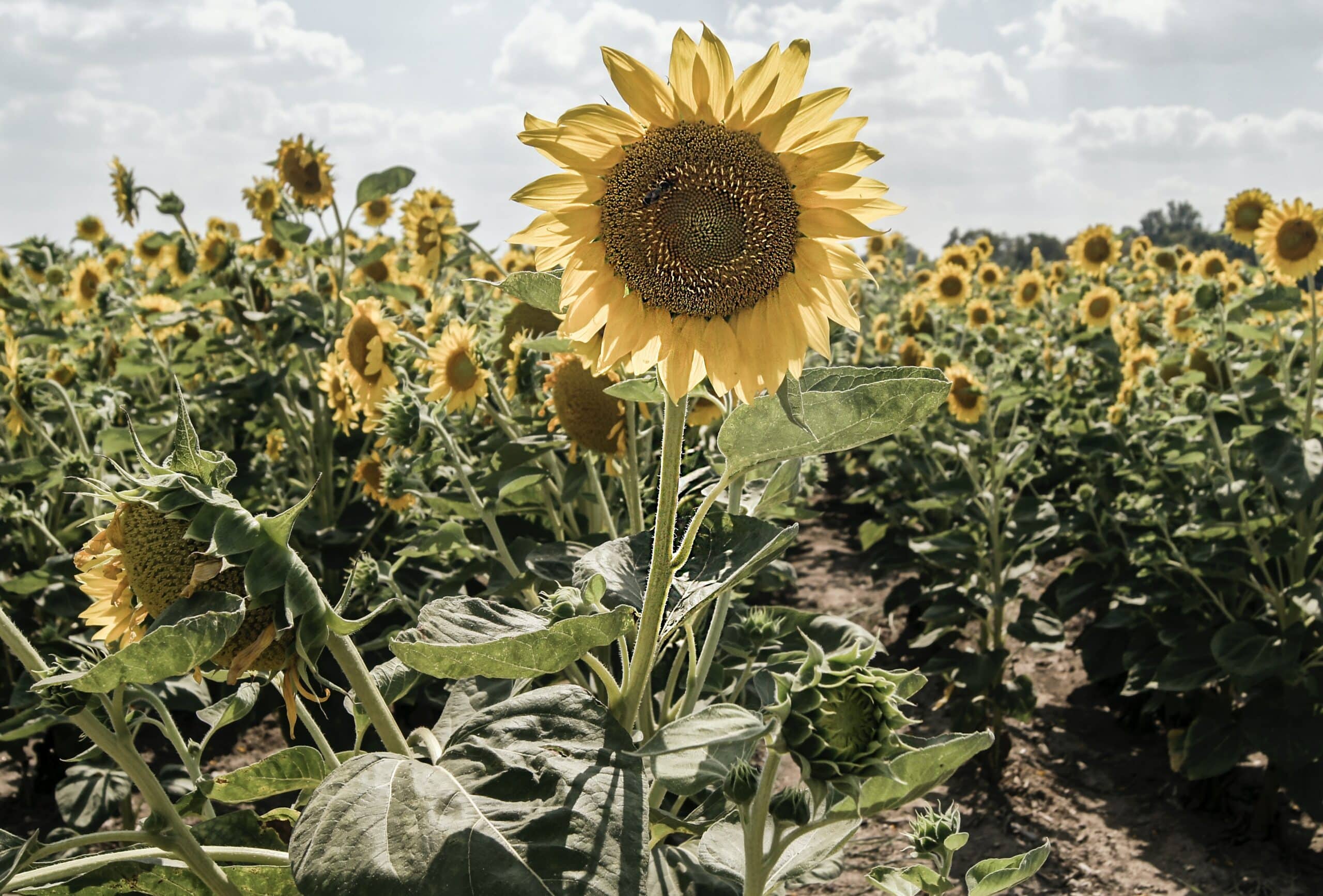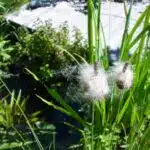The sunflower is a symbol of joy and positivity, radiating beauty and awe no matter where it blooms. But did you know that these magnificent flowers possess an array of fascinating facts that are sure to leave you in a state of wonder? From their scientific properties to their historical significance, the humble sunflower is truly a marvel to behold. Here are 9 cool things you might not know about this beloved blossom!
Sunflowers have been around for centuries. Dating back to Egyptian times, references and drawings of sunflowers can be found in ancient artwork and hieroglyphs. Sunflowers were even used as offerings in religious ceremonies by the Aztecs, who believed the flower symbolized the Sun God.
Apart from its historical value, there’s so much more to learn about sunflowers – like how they’ve been used as a source of food or medicine, or their ability to actually move with the sun throughout the day! Keep reading to find out all about this remarkable flower and its many secrets.
Sunflowers Are Native To North America
Did you know that sunflowers are native to North America? This incredible flower is actually from the same family as daisies and asters. According to recent statistics, there are more than 70 species of sunflower, making them one of the most diverse flowering plants in the world.
It’s no wonder these vibrant blooms have become so popular; they’re an iconic symbol of summer. And what’s even more remarkable is that they follow the sun! Sunflowers use something called heliotropism — a process where they move their heads throughout the day toward the direction of light. As a result, their petals always face the sun at its highest point in the sky.
This unique behavior can be seen in nature or in your backyard garden and adds another layer of intrigue to this beloved flower. So if you’re looking for a fun way to brighten up your outdoor space, look no further than a field of cheerful sunflowers!
Sunflowers Follow The Sun
Sunflowers are known for their incredible beauty and impressive stature, but did you know they have an amazing ability too? Sunflowers actually follow the sun, a phenomenon called heliotropism. This means that during the day, they will slowly turn to face the sun and maximize the amount of sunlight they receive. In this way, sunflowers can get as much light as possible no matter where in the sky it is.
Heliotropism also helps them follow the changing seasons. As days become shorter in winter, sunflowers will move further east during morning hours, and further west during afternoon hours. This helps them capture more light for longer periods of time. It’s truly remarkable to think that these flowers are able to adjust themselves in such a sophisticated manner according to their environment!
Plus, this phenomenon is quite beneficial for those who grow sunflowers commercially – it allows them to collect higher yields with less effort. All in all, heliotropism is just one more fascinating thing about these iconic flowers that make them so special.
And speaking of special things about sunflowers – did you know they can grow up to 12 feet tall?
Sunflowers Can Grow Up To 12 Feet Tall
Standing tall and proud, sunflowers are a sight to behold! Did you know that these glorious giants can grow up to 12 feet tall? It’s true – and that’s only one of the many cool facts about this beloved bloom.
Believe it or not, sunflowers’ impressive height is just the tip of the iceberg when it comes to their fascinating traits. Their single stem structure and large faces are also very notable features. In addition, these flowers have the amazing ability to actually follow the path of the sun throughout the day – a quirk which has earned them their name.
But sunflowers have more uses than simply being aesthetically pleasing. They are often used in cooking as edible seeds, while their oil is commonly used in skin care products and cosmetics. Sunflower oil is also an excellent source of Vitamin E and essential fatty acids. It’s no wonder why this flower has been celebrated for centuries!
Sunflowers Have Many Uses
Sunflowers have many uses. Not only are they a beautiful addition to any garden, but they can also be used in a variety of ways around the home! Sunflower oil is rich in fatty acids and is often used for cooking and as a health supplement. Sunflower seeds can also be enjoyed as a snack or sprinkled on salads for added flavor and crunch. Plus, sunflowers make great cut flowers that last much longer than other types of blooms.
Sunflower hearts are becoming increasingly popular too! They’re an excellent source of high-quality protein and provide essential vitamins like B6, thiamin, folate, magnesium and zinc that are essential for good health. The hulls of the sunflower can also be composted or used as mulch to help retain moisture in gardens.
In addition to all their practical uses, sunflowers are also known for their beauty. With so many different colors available, it’s no wonder why sunflowers have become such popular decorations in homes across the world!
Sunflowers Change Color Over Time
Sunflowers are often associated with beauty, joy and happiness, a fitting embodiment of the warmth of the summer sun. But there’s another fascinating aspect to these beloved flowers: they change color over time. As an ever-morphing symbol of life’s journey, sunflowers can take us on an unexpected adventure.
As the flower blooms and its petals unfurl, its yellow hue deepens from sunny gold to a richer brownish-orange. This transformation illustrates that life is ever-evolving and we must be prepared for whatever comes our way. During this metamorphosis, the vibrant golden petals eventually give way to tiny black seeds – a reminder that after every beginning must come an end.
The changing colors of sunflowers also represent resilience and strength in the face of adversity; no matter what life throws at them, they will continue to grow and find ways to adapt and thrive. Sunflowers serve as reminders that while nothing lasts forever, there will always be something beautiful to look forward to as life moves forward.
Sunflowers Are A Symbol Of Adoration
Sunflowers are a powerful symbol across cultures and time, representing adoration, loyalty, and long-term relationships. In fact, the sunflower is known to be one of the oldest flowers in existence; historical records show that it dates back to ancient Egyptian times over 3,000 years ago!
As symbols of adoration, sunflowers often represent the warmth and joy provided by a loving relationship. It is not uncommon for sunflowers to appear in romantic bouquets or as a gesture of appreciation towards someone special. Additionally, some cultures consider these vibrant flowers to be symbols of good luck.
Overall, sunflowers are meaningful symbols of love and happiness that have been around for thousands of years. As such, they are an important part of our history and culture today. Transitioning into the next section about how easy it is to grow them, we can see why so many people enjoy having them in their gardens.
Sunflowers Are Easy To Grow
The sunflower is a beacon of beauty and joy, with its vibrant hues and captivating petals. Growing sunflowers is just as easy as admiring them – the perfect way to add a touch of sunshine to your garden without much effort.
What’s more, sunflowers are incredibly easy to grow. They require minimal care and maintenance, making them an ideal choice for novice gardeners or those who don’t have a lot of time on their hands. Sunflowers thrive in sunny locations with well-drained soil, so you don’t have to worry about over-watering them or providing too much shade. Plus, they need little in the way of fertilizer – some compost here and there will do the trick!
All these qualities make sunflowers an appealing option for sprucing up any outdoor space. With a bit of planning and preparation, you can enjoy beautiful blooms year after year that will bring life and color to your yard. And best of all, it won’t take much work on your part! Moving forward, we’ll explore how sunflowers attract beneficial insects that will help keep your garden healthy and happy.
Sunflowers Attract Beneficial Insects
Sunflowers are not only beautiful to look at, but they also provide a great benefit to the environment. These flowers attract beneficial insects like bees and other pollinators. This is important for gardens because these insects help to cross-pollinate plants, which helps them grow better. Sunflowers have even been known to reduce the populations of pests that can damage crops.
The flowers themselves can be used in many ways as well. Sunflower petals are edible, so people can use them to decorate salads or other dishes. They also make a great addition to homemade tea blends. The seeds are edible too and can be used in a variety of recipes including breads, muffins and granola bars.
In addition, sunflower oil is a healthy cooking option as it contains essential fatty acids that our bodies need for optimal functioning. Plus, it has a mild flavor that works well in both sweet and savory dishes alike. With all these uses for sunflowers, it’s no wonder they’re such beloved garden plants! Moving on from their many benefits, let’s look at how sunflowers have edible seeds…
Sunflowers Have Edible Seeds
Ah, sunflowers. These beloved yellow blooms bring a sense of joy and life to any environment. As if they weren’t already wonderful enough, here’s the icing on the cake: sunflowers have edible seeds!
That’s right–these gorgeous flowers can actually be used as an ingredient in your favorite recipes. The seeds are high in Omega-6 fatty acids, protein, and dietary fiber, making them a tasty way to get some essential nutrients. Sunflower seeds can be eaten raw or roasted for added flavor.
Whether you’re looking for a snack or want to use them for baking, sunflower seeds are a great addition to your pantry. They are also great for garnishing salads and other dishes with their crunchy texture and nutty flavor. With so many delicious options available, it’s no wonder why these versatile seeds have been around for centuries!
Sunflowers Are Used To Make Oil
Did you know that sunflowers are not just used for decoration? According to a survey conducted by the National Sunflower Association, approximately 2.6 million metric tons of sunflower oil is produced annually worldwide. That’s enough to fill 8,500 Olympic-sized swimming pools!
This versatile oil is derived from pressing the seeds of the sunflower, which in turn can be used in food and cosmetics products. It’s also believed to have anti-inflammatory properties when applied topically, making it an attractive choice for many skin care products. Additionally, the oil is rich in vitamin E, which helps protect against free radical damage and other skin problems.
Sunflower oil has become increasingly popular over the years due to its versatility and abundance of health benefits. Whether you’re looking for a cooking ingredient or a product to help soothe your skin, sunflower oil has got you covered! Now let’s take a look at how sunflowers have medicinal properties…
Sunflowers Have Medicinal Properties
Like a shining beacon in the garden, sunflowers have long been a symbol of joy and optimism. But did you know that these beautiful blooms also have medicinal properties? Let’s take a closer look at the fascinating healing benefits of the sunflower.
Sunflowers are incredibly versatile plants. They contain high concentrations of vitamins A, B, D, and E as well as minerals like iron and potassium. This makes them a great source for natural remedies to treat things like inflammation, skin problems, and water retention. Sunflower oil is even believed to be beneficial in treating arthritis!
But it’s not just their medicinal qualities that make sunflowers so special. Sunflowers have been used in art for centuries; they’re often featured prominently in paintings by Van Gogh and other master painters. From traditional artwork to modern day home décor, sunflowers add a touch of beauty wherever they go!
Sunflowers Have Been Used In Art For Centuries
Sunflowers have been a source of inspiration for artists throughout the centuries. In fact, sunflower art has been around since ancient times. From Vincent van Gogh’s famous 1888 painting to various other works of art, these bright yellow flowers have been used to create masterpieces that capture both their beauty and symbolism. Sunflower art is often associated with themes such as faithfulness and loyalty, as well as strength and resiliency.
In addition to being a popular subject in art, sunflowers have also been used in many different cultures for medicinal purposes. For example, Native Americans used the flowers to treat bruises and reduce inflammation. They also believed that burning the petals could help ward off evil spirits. China also has a long history of using sunflowers medicinally; people there have used them for centuries for treating respiratory illnesses such as asthma and bronchitis.
These bright blooms are more than just beautiful – they’ve played an important role in history and can provide us with more than just aesthetic pleasure. With their many uses, from medicinal to decorative, it’s no wonder why sunflowers continue to be celebrated today. As we move forward, it will be interesting to see what new ways we find to utilize these versatile flowers.
It turns out that sunflowers also have the ability to clean soil by absorbing pollutants such as heavy metals from contaminated areas. This process is called phytoremediation and can help restore ecosystems that have been damaged by industrial waste or other pollutants.
Sunflowers Have The Ability To Clean Soil
Like a beacon of light amongst the darkness, sunflowers have the ability to clean soil. As if sent from above, these majestic plants can perform a miraculous task. To think that something so small can make such a big difference is nothing short of remarkable.
For starters, sunflowers possess an uncanny ability to absorb toxins from the soil they grow in. This means they can help to restore contaminated land back to its natural state. Additionally, they can also be used as a form of bioremediation, which is a process where plants help break down hazardous materials and pollutants in order to make them less harmful or even harmless.
These sunflowers are truly heroes for our environment and yet another reminder of how plants are essential for life on Earth. It’s no wonder their cheerful yellow petals have been used in art for centuries – the power of its healing capabilities should not go unnoticed! Taking it one step further, sunflowers also have a long lifespan that allows them to provide even more benefits over time.
Sunflowers Have A Long Lifespan
Sunflowers are not only beautiful, but incredibly resilient. It turns out that sunflowers have a long lifespan – these flowers can last for up to five years! This makes them an ideal choice for gardeners and flower lovers who want a bloom that will last for several growing seasons.
This is especially impressive when you consider the fact that many other varieties of flowers have a much shorter life span. Sunflowers are hardy and able to survive in most climates, making them more likely to reach their full potential lifespan of five years.
For people looking to add color and longevity to their gardens, sunflowers are definitely worth considering. They come in a wide variety of colors and sizes, so there’s something to suit almost any taste or occasion. With their ability to withstand harsh conditions and long-lasting blooms, they make an excellent choice for anyone wanting to grow something beautiful that will last for years. And with their bright faces turned towards the sun, they always bring cheer wherever they go!
In addition to being hardy and long-lasting, sunflowers come in many different varieties. From classic yellow blooms to multi-colored hybrids, there’s sure to be one that appeals to you!
Sunflowers Come In Many Different Varieties
To kick things off, sunflowers come in more shapes and sizes than you can shake a stick at. That’s right, there are multitudes of varieties of this cheerful plant.
The diversity of these blossoms starts with the seeds. There is a vast array of them to choose from; some with huge heads, some with thin stalks, some that grow quickly and others that take their sweet time. The petals can be single- or double-layered, and the colors range from yellow to orange, red to purple.
No matter which type you go for they all have something in common: they always look towards the sun! So if you’re looking to add a splash of color to your garden, consider planting sunflowers – you’ll be glad you did!
Frequently Asked Questions
How Long Do Sunflowers Typically Live?
Sunflowers are a beautiful addition to any garden, and they can bring a smile to anyone’s face. But did you know that these delightful blooms have more to them than just their bright colours? Here are some interesting facts about sunflowers that you may not have known…
Have you ever wondered how long a sunflower lives? Well, it turns out that the lifespan of these flowers varies greatly depending on the species. Some varieties of annual sunflowers only live for one season and then die off, while others can live up to two years! Interestingly, perennial species can also survive for longer periods of time as long as they are properly cared for.
But what’s even more remarkable is that sunflowers actually turn their heads towards the sun throughout the day – an effect which is known as heliotropism. This helps the plants make sure they get the most light and energy possible from the sunshine, helping them grow strong and healthy so they can last longer in our gardens! So with proper care and attention, sunflowers can be around for a surprisingly long time — bringing us joy for many seasons to come.
Are There Any Special Requirements For Growing Sunflowers?
Ah, sunflowers. Those cheerful yellow blossoms that seem like they could bring sunshine to even the gloomiest of days. Who wouldn’t want to grow these beautiful blooms in their garden? But before you get started, it’s important to know if there are any special requirements for growing sunflowers. Let’s take a look!
Surprisingly, not much is needed in terms of soil or water for these hardy plants. All they need is an area with full sun and moist, well-drained soil. As for planting time, the best time for sowing seeds is usually around mid-May after the last frost has passed. That said, it’s important to remember that sunflowers can be quite tall – some reaching up to 12 feet – so make sure you don’t plant them too close together.
In addition to having plenty of space and sunlight, it’s also helpful to keep an eye on pests such as aphids and spider mites that may try to feast on your beloved flowers. If caught early enough, many infestations can be taken care of with natural remedies such as horticultural oils or insecticidal soaps. With a bit of TLC and occasional pest control measures, your sunflowers should thrive!
What Is The Best Way To Harvest Sunflower Seeds?
Harvesting sunflower seeds is a rewarding experience for many gardeners. It’s like unlocking a secret treasure trove of nutrition, flavor, and beauty. But before you can reap the rewards of this task, there are some key points to keep in mind. Here’s the best way to harvest sunflower seeds.
First things first – timing is everything. Make sure to wait until the back of the flower head turns brown before harvesting in order to maximize the number of seeds you get. Then use your hands or scissors to remove them from the flower head, taking care not to damage any of the other petals or stems. To make sure all the seeds have been removed, gently shake them out onto a large sheet or paper towel.
Now that you have your sunflower seeds in hand, it’s time to start storing them. Make sure they are completely dry before packing them away – otherwise they could get moldy and ruined! Keep an eye on their progress as they dry and store in airtight containers once they’re ready. It’s worth taking an extra step here: by labeling each container with its harvest date, variety name, and other details about the seed batch, you’ll be able to track which ones were successful over time! Like finding buried treasure, harvesting sunflower seeds requires patience and effort – but it’s definitely worth it in the end!
Are There Any Other Uses For Sunflower Oil Besides Cooking?
The sunflower is an intriguing flower, often admired for its beauty and cheerful nature. But did you know that there are other uses for this amazing plant, such as the oil extracted from its seeds? Sunflower oil is widely used in cooking, but it can also be used for a variety of other applications. Let’s explore what else sunflower oil can do.
Sunflower oil has many cosmetic benefits when applied to skin. Its anti-inflammatory properties make it ideal for soothing redness and irritation, while its high concentration of vitamin E helps promote healthy skin. It can also be used as a natural substitute for makeup remover or as an ingredient in homemade face masks and scrubs.
Not only is sunflower oil beneficial for the face and body, but it can also be used around the home. Its high smoke point makes it perfect for deep frying foods, while its antibacterial properties make it great for cleaning surfaces or even washing dishes. Sunflower oil is not only versatile and economical, but it is also beneficial to our health and environment!
Are There Any Known Health Benefits Associated With Sunflower Consumption?
Surprisingly, sunflowers are not just a pretty face. They have some hidden benefits as well! While most people know that sunflower oil is a great cooking oil, did you know that consuming sunflower seeds or their derivatives can actually be beneficial to your health? There are numerous potential health benefits associated with sunflower consumption.
One of the main components found in sunflowers is Vitamin E, which is an important antioxidant for our bodies. It helps protect cells from oxidative damage and has been linked to reducing the risk of heart disease and stroke. Additionally, the seeds are rich in minerals such as copper, zinc, magnesium and selenium which all have different essential roles in our body’s functioning. Sunflower seeds also contain a high amount of vitamin B6 which can boost energy levels and help reduce stress hormones like cortisol.
Sunflower consumption may even help with digestive issues like constipation or indigestion due to its high fiber content. Furthermore, studies have suggested that incorporating these healthy fats into your diet may benefit those struggling with depression or anxiety by providing a natural source of omega-3 fatty acids. So next time you’re looking for something tasty to snack on, don’t forget about your friendly neighborhood sunflower!
Conclusion
Sunflowers are a beautiful and versatile plant that can be used for a variety of purposes. They have been around for thousands of years, and they continue to bring joy to people all over the world. From providing stunning visual appeal in gardens to providing delicious culinary treats, sunflowers are an incredible addition to any home or garden. In addition, sunflowers offer various health benefits when consumed, including improved heart health and immune system support.
One unique fact about these vibrant yellow flowers is how quickly they grow. In just a few short months, a tiny seedling can become an impressive four feet tall! This is a testament to the power of nature and its ability to create something so awe-inspiring from such humble beginnings.
The beauty and versatility of sunflowers make them an excellent addition to any home or garden. Their bright petals will add color and life to your outdoor space while also offering numerous health benefits when consumed. With their long lifespan and easy harvesting process, you’ll be sure to enjoy your sunflower harvest for many years to come!





























